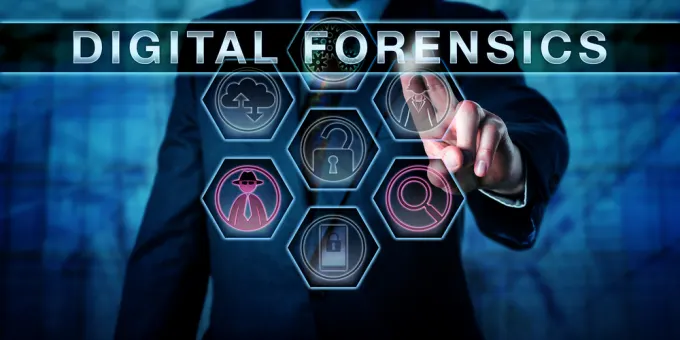Introduction: The field of digital forensics is experiencing a tectonic change. As the volume of data generated by our increasingly digitized lives grows, classic investigative approaches struggle to keep up. Enter artificial intelligence (AI), which provides strong new tools for law enforcement organizations to sift through mountains of digital information and find the important needles therein.
The Explosion of Digital Data
In today’s interconnected world, digital data is generated at an unprecedented rate. From emails and text messages to social media posts and financial transactions, the sheer volume of digital information is staggering. This data explosion presents a significant challenge for digital forensics, where identifying relevant evidence among terabytes of information can be like finding a needle in a haystack.
The Limitations of Traditional Forensic Techniques
Traditional digital forensic techniques often involve manual analysis, which is time-consuming and labor-intensive. Investigators must painstakingly sift through data, looking for clues that could be critical to solving a case. This process is not only slow but also prone to human error, making it difficult to keep up with the ever-growing volume of digital evidence.
Enter Artificial Intelligence
Artificial intelligence is transforming digital forensics by providing powerful tools that can analyze vast amounts of data quickly and accurately. Here’s how AI is revolutionizing the field:
1. Automated Data Analysis
AI algorithms can process and analyze large datasets far more efficiently than humans. By automating data analysis, AI can quickly identify patterns, anomalies, and connections that might otherwise go unnoticed. This capability is particularly valuable in cases involving large volumes of digital evidence, such as cybercrimes and financial fraud.
2. Machine Learning
Machine learning, a subset of AI, enables systems to learn from data and improve over time. In digital forensics, machine learning algorithms can be trained to recognize specific types of evidence, such as malicious software or suspicious financial transactions. As these algorithms are exposed to more data, their accuracy and efficiency continue to improve.
3. Natural Language Processing
Natural language processing (NLP) allows AI systems to understand and interpret human language. This technology is crucial for analyzing textual data, such as emails and social media posts. NLP can identify relevant keywords, sentiments, and even hidden meanings within text, providing valuable insights for investigators.
4. Image and Video Analysis
AI-powered image and video analysis tools can examine multimedia content for critical evidence. These tools can recognize faces, objects, and activities within images and videos, significantly speeding up the analysis process. This capability is especially useful in cases involving surveillance footage and digital photography.
Real-World Applications
AI’s impact on digital forensics is already evident in various real-world applications:
1. Cybercrime Investigation
In cybercrime investigations, AI can analyze network traffic and system logs to identify signs of unauthorized access or malicious activity. Machine learning algorithms can detect patterns associated with known cyber threats, helping investigators pinpoint the source and extent of a breach.
2. Financial Fraud Detection
AI is also instrumental in combating financial fraud. By analyzing transaction data, AI can identify unusual patterns that may indicate fraudulent activity. This capability allows financial institutions and law enforcement agencies to detect and respond to fraud more quickly and effectively.
3. Counter-Terrorism
In counter-terrorism efforts, AI can analyze communications and social media activity to identify potential threats. NLP can detect extremist language and sentiments, while machine learning algorithms can recognize behavioral patterns associated with terrorist activities.
Challenges and Considerations
While AI offers significant benefits for digital forensics, it also presents challenges and considerations:
1. Data Privacy
The use of AI in digital forensics raises important questions about data privacy. Ensuring that AI applications comply with legal and ethical standards is crucial to protect individuals’ rights.
2. Algorithmic Bias
AI algorithms can inherit biases present in the data they are trained on, leading to biased outcomes. Continuous monitoring and updating of algorithms are necessary to mitigate this risk and ensure fair and accurate results.
3. Integration with Existing Systems
Integrating AI tools with existing forensic systems and processes can be challenging. Effective collaboration between technologists and forensic experts is essential to ensure seamless integration and optimal performance.
The Future of Digital Forensics
The future of digital forensics lies in the continued advancement and integration of AI technologies. As AI systems become more sophisticated, their ability to analyze and interpret digital evidence will continue to improve. This evolution will enable law enforcement agencies to stay ahead of increasingly complex criminal activities and ensure justice in the digital age.
Conclusion
The seismic shift in digital forensics brought about by AI is transforming the way investigators approach and solve cases. By harnessing the power of AI, law enforcement agencies can navigate the deluge of digital data with unprecedented speed and accuracy. While challenges remain, the potential of AI to revolutionize digital forensics is undeniable, promising a future where justice is more effectively served in our increasingly digital world.
FAQs on AI and Digital Forensics
1. How is AI changing the field of digital forensics?
AI is revolutionizing digital forensics by automating data analysis, identifying patterns, and uncovering hidden connections in vast datasets, making investigations faster and more accurate.
2. What types of evidence can AI analyze in digital forensics?
AI can analyze various types of evidence, including textual data, images, videos, network traffic, and financial transactions, helping investigators uncover critical information.
3. How does AI help in identifying cyber threats?
AI helps identify cyber threats by analyzing network traffic and system logs, detecting patterns associated with known cyber threats, and pinpointing signs of unauthorized access or malicious activity.
4. What are the challenges of using AI in digital forensics?
Challenges include ensuring data privacy, mitigating algorithmic bias, and effectively integrating AI tools with existing forensic systems and processes.
5. How does AI handle textual data in digital forensics?
AI uses natural language processing (NLP) to understand and interpret human language, identifying relevant keywords, sentiments, and hidden meanings within textual data such as emails and social media posts.



